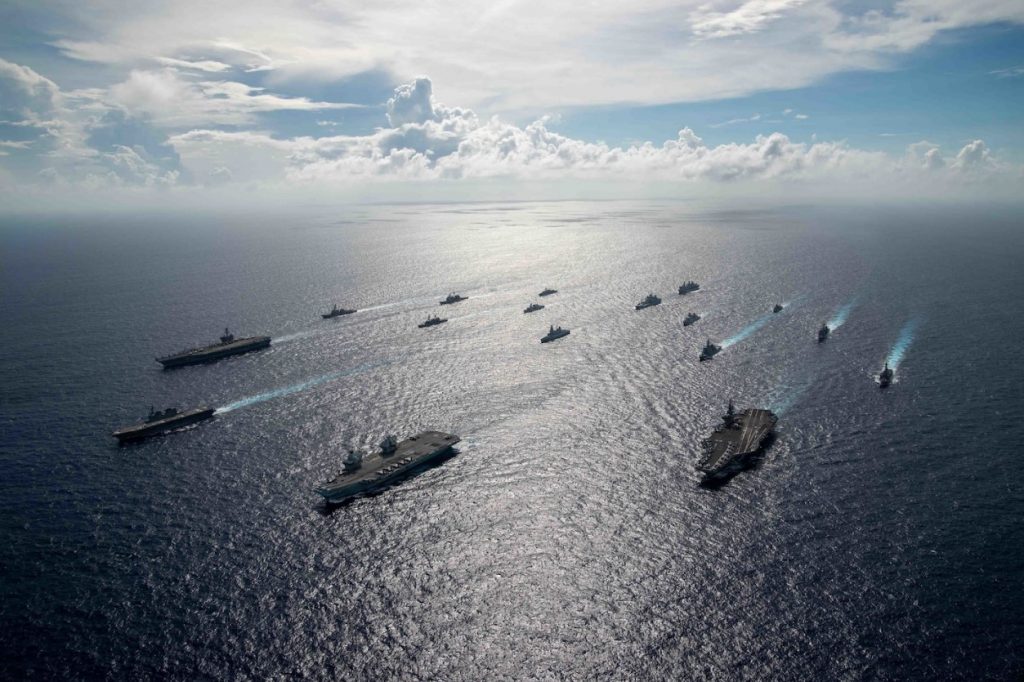The US Navy’s Japan-based aircraft carrier USS Ronald Reagan (CVN 76) returned home on October 16, completing a five-month deployment that included operations in Middle East.
The carrier predominantly operates in Asia-Pacific, as part of the US 7th Fleet, but was tasked to sail to the Middle East this time in a sign of mounting strain on carrier operations. The high operational tempo has also seen the navy send its carriers on double pump deployments on more than one occasion.
“This year’s deployment was historic and unprecedented for the US Navy’s only forward-deployed aircraft carrier,” said Capt. Fred Goldhammer, Ronald Reagan’s commanding officer.
“Our crew’s unrelenting dedication, seamless teamwork, and unmatched ability to overcome challenges enabled Ronald Reagan’s ability to provide support for operations Freedom’s Sentinel and Allies Refuge during the final days of the war in Afghanistan.”
During Ronald Reagan’s deployment, the embarked Carrier Air Wing (CVW) 5 flew more than 14,820 flight hours, and the ship transited nearly 43,000 nautical miles. The strike group departed Yokosuka, May 19 and conducted passing exercises with the Japan Maritime Self-Defense Force (JMSDF) and the Republic of Singapore Navy (RSN) in May and June.
The ship transited through the Strait of Malacca on June 18 and participated in joint, simultaneous multi-domain operations with the Indian Navy and Air Force from June 23-24. This marked the first naval integration event off the West Coast of India since exercise Malabar 2020.
The carrier strike group executed integrated at-sea operations alongside the United Kingdom’s HMS Queen Elizabeth (R 08) Strike Group, as well as the Iwo Jima Amphibious Ready Group (IWOARG) and the 24th Marine Expeditionary Unit, in the Gulf of Aden, July 12. The strike group also participated in several interoperability and bilateral events, to include operations with the French frigate FS Languedoc (D 653), Pakistan Navy frigate PNS Alamgir (F 260) and German Navy frigate FGS Bayern (F 217).
While deployed to the US 5th Fleet area of operations, Ronald Reagan supported naval operations while CVW 5 provided airpower to protect US and coalition forces as they conducted drawdown operations from Afghanistan.
Operating as Task Force 50 in 5th Fleet, personnel from the strike group supported Task Force 58 in September with facilitating the safe transit of more than 7,000 US citizens and evacuees traveling from Afghanistan during Operation Allies Refuge. The task force included more than 1,400 US and coalition personnel from various units operating in the region. US service members worked to provide travelers with meals, short-term lodging, and medical services around the clock before departing.
The strike group returned to US 7th Fleet on September 17 from the US 5th Fleet area of operations.

Prior to returning home in October, the strike group and USS Carl Vinson (CVN 70) carrier strike group joined with United Kingdom’s carrier strike group led by HMS Queen Elizabeth (R08) CSG 21 and JMSDF ships led by Hyuga-class helicopter destroyer JS Ise (DDH 182) for multiple carrier operations in the Philippine Sea; bringing together 17 ships from six nations and more than 15,000 sailors.



























